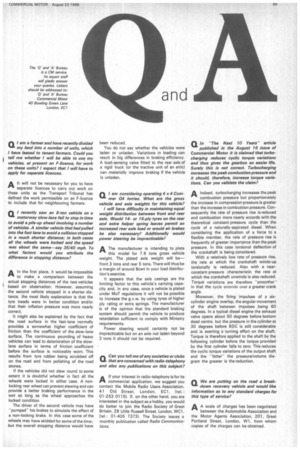Q In "The Next 10 Years" article
Page 69

If you've noticed an error in this article please click here to report it so we can fix it.
published in the August 16 issue of Commercial Motor it is claimed that turbocharging reduces cyclic torque variations and thus gives the gearbox an easier life. Surely this is not correct. Turbocharging increases the peak combustion pressure and it should, therefore, increase torque variations. Can you validate the claim?
AIndeed. turbocharging increases the peak
combustion pressure but proportionately the increase in compression pressure is greater than the increase in combustion pressure. Consequently the rate of pressure rise is reduced and combustion more nearly accords with the theoretical constant-pressure cycle than the cycle of a naturally-aspirated diesel. When considering the application of a force to a flexible member, the rate of pressure rise is frequently of greater importance than the peak pressure. In this case torsional deflection of the crankshaft is being considered.
With a relatively low rate of pressure rise, the rate at which the crankshaft winds-up torsionally is reduced. Also with a nearconstant-pressure characteristic the rate at which the crankshaft unwinds is also reduced. Torque variations are therefore "smoother" in that the cycle extends over a greater crank angle Moreover, the firing impulses of a sixcylinder engine overlap, the angular movement of the shaft between impulses ,being 60 degrees. In a typical diesel engine the exhaust valve opens about 50 degrees before bottom dead centre, but the pressure in the cylinder at 30 degrees before BDC is still considerable and is exerting a turning effort on the shaft. Torque is therefore applied to the shaft by the following cylinder before the torque provided by the first cylinder falls to zero. This reduces the cyclic torque variations of the output shaft and the "fatter" the pressure/volume diagram the greater is the reduction.




















































































































